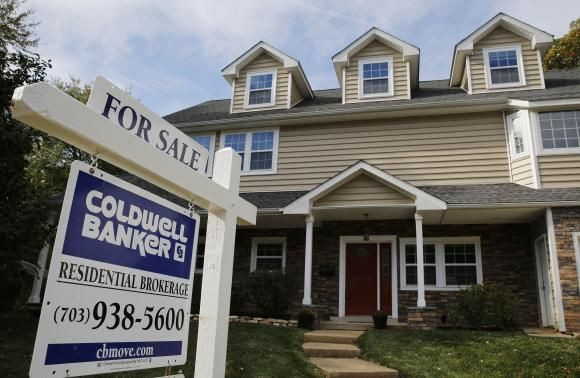US Existing Home Sales At One-Year High, Prices Up

(Reuters) - U.S. home resales raced to a one-year high in September, the latest indication the housing market recovery is gradually getting back on track.
A separate report on Tuesday showed service sector activity in the nation's mid-Atlantic region picked up speed this month, another signal suggesting underlying strength in the economy.
The National Association of Realtors said existing home sales increased 2.4 percent to an annual rate of 5.17 million units, the strongest reading since September of last year.
That was above economists' expectations for a rise to a 5.10 million unit pace and more than reversed August's decline, which had pushed down sales to a 5.05 million unit pace. Still, sales were 1.7 percent below those for September of last year.
"The housing recovery continues to move along sluggishly, as consumers are stuck between tight credit standards and limited wage growth," said Sophia Kearney-Lederman, an economist at FTN Financial in New York.
Housing is slowly regaining its footing after activity stalled in the second half of 2013 following a run-up in mortgage rates. While it continues to be hobbled by sluggish wage growth, a recent decline in mortgage rates should help support sales.
The 30-year mortgage rate fell to an average of 3.97 percent last week from 4.12 percent in the week ended Oct. 9, according to data from mortgage finance firm Freddie Mac. The decline reflected a sharp drop in U.S. Treasury debt yields as traders pushed back expectations for the first interest rate hike by the Federal Reserve against a backdrop of troubling economic news from overseas and a big sell-off in global stock markets.
FIRST-TIME BUYERS SIDELINED
The housing data helped U.S. stocks to extend gains. The housing sector index .HGX rose 1.3 percent, with shares of homebuilder Pulte Group (PHM.N) gaining 2.18 percent and those of KB Home (KBH.N) increasing 2.45 percent.
Prices for U.S. Treasury debt fell, while the dollar rose against a basket of currencies.
In a separate report, the Philadelphia Federal Reserve Bank said its gauge of non-manufacturing activity in the mid-Atlantic region rose to 44.1 in October from 35.7 in September.
Measures of new orders and sales both increased, but a reading on service sector jobs slipped, suggesting a slower pace of improvement in the labor market.
While home sales picked up last month, first-time buyers, a critical component for a sustainable recovery, remained on the sidelines. They accounted for 29 percent of sales for a third straight month, below the 40 percent to 45 percent that is considered ideal by economists and real estate agents.
"We need to see more first-time buyers both willing and able to buy, without the support of excessively easy credit, if we really want to see a healthier and more sustained recovery in housing," said Diane Swonk, chief economist at Mesirow Financial in Chicago.
Investors, who had supported the market, have been withdrawing. They accounted for only 14 percent of transactions last month, down from 19 percent in September of last year.
The inventory of unsold homes on the market increased 6 percent from a year ago to 2.30 million. At September's sales pace, it would take 5.3 months to clear houses from the market, down from 5.5. months in August. A six months' supply is viewed as a healthy balance between supply and demand.
With supply improving, house price gains continue to moderate. The median home price rose 5.6 percent in September from a year ago, but that was down from the double-digit growth seen for much of 2013.
© Copyright IBTimes 2024. All rights reserved.




















